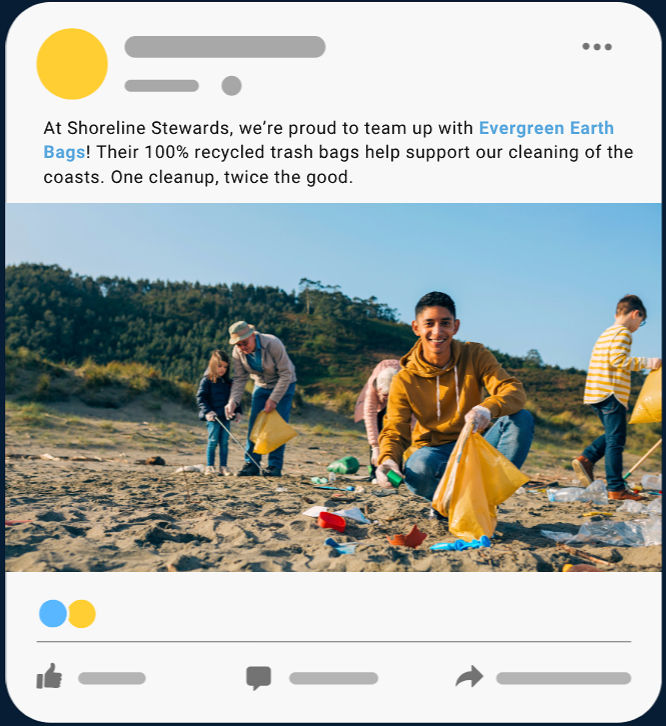How to Effectively Advertise Eco-Friendly Products
- Dolomites Consulting Team

- May 5
- 4 min read
Updated: Jul 1

In today’s market, sustainability sells, but only when it’s authentic, well-communicated, and backed by action. Eco-conscious consumers aren’t just looking for buzzwords like “green” or “natural.” They’re researching product origins, reading labels, and expecting full transparency.
If your brand is committed to sustainability, your advertising strategy should reflect that commitment with clarity and purpose. Here's how to effectively promote your eco-friendly products and stand out from competitors while building long-term customer loyalty.
Start With the Why: Make Purpose Your Hook

The most successful sustainable brands lead with their mission. Consumers want to support companies that align with their values, so your “why” should be front and center.
If your product helps reduce waste, protect marine life, or support local artisans, highlight that in your messaging. Purpose-driven branding helps customers feel emotionally connected, which builds trust and drives conversions.
Example: “Our packaging is 100% plastic-free, designed to protect your health and the planet’s future.”
Make this message consistent across your ads, landing pages, and product descriptions. For help with building brand storylines, see our blog on Brand Strategy for Sustainability-Focused Companies.
Use Clear and Verified Claims
Eco-aware buyers are skeptical of vague terms. Avoid buzzwords that sound good but say little. Instead, use clear language, data, and certifications that prove your impact.
For example, say “FSC-certified bamboo” instead of “sustainably sourced” or “compostable mailers made from cornstarch” instead of just “eco packaging.” These details matter.
Highlight:
Certifications like USDA Organic, Fair Trade, or B Corp
Measurable impact stats (ex: gallons of water saved, emissions reduced)
Lifecycle transparency (recyclable, biodegradable, reusable)
This improves both credibility and search engine ranking when using structured keywords.
Educate Your Audience with Value-Driven Content

Eco-products often come with new habits or features that may be unfamiliar. Use your ads and content to teach people what makes your solution better, and how to use it.
Educational marketing not only informs but also improves SEO. Long-tail keywords like “how to use refillable cleaning products” or “benefits of compostable packaging” can attract high-intent traffic to your site.
Ideas for content that works in ads and blog posts:
Short videos showing how your product reduces waste
Infographics comparing environmental impact
Blog posts like to support content development
Focus on Lifestyle Integration
The most effective sustainability ads don’t just talk about the product, they show how it fits into a bigger lifestyle. Visuals and messaging should connect your product to values like wellness, mindfulness, outdoor living, or minimalism.
Paint a picture of your ideal customer’s life with your product in it. Use real-world settings like homes, parks, kitchens, and travel scenes to create relevance.
This approach boosts performance on platforms like Instagram, Pinterest, and Facebook where visual storytelling matters most.
Leverage Real Stories and Community Voices

Social proof builds trust, especially when advertising purpose-led brands. Share testimonials, reviews, and user-generated content that shows how real customers are making sustainable choices with your product.
If you’re working with influencers, choose those who genuinely care about the environment. Micro-influencers and niche creators often perform better than celebrities for eco brands because their audiences are highly engaged.
Encourage your community to tag your brand in their posts, then feature that content across your channels. Bonus: this provides SEO-rich, authentic content that increases engagement and credibility.
Match Your Message to the Right Platforms
Every advertising platform offers different strengths. Make sure your eco messaging is tailored to where your audience spends time.
Channel highlights:
Meta (Facebook/Instagram): Use storytelling visuals, video reels, and educational carousels.
Google Search Ads: Target terms like “eco-friendly laundry sheets” or “zero waste shampoo bars.”
Pinterest: Share content like DIY guides, home inspiration, or eco product checklists.
LinkedIn: Ideal for B2B green products and showcasing ESG progress or supply chain transparency.
Targeting and retargeting also allow you to segment by values-based behavior, purchase history, or interests like sustainability and clean beauty.
Be Transparent About Your Journey

Don’t try to appear perfect. If your company is still working toward sustainability goals, say so. Authenticity is far more effective than perfectionism, and customers appreciate transparency.
Example: “We’ve reduced our emissions by 40% since 2021 and are working to eliminate virgin plastics by 2026.”
Avoid making claims you can’t verify or using visuals that mislead. Greenwashing damages your reputation and makes audiences tune out.
Final Thoughts: Create Marketing That Inspires Change
Advertising eco-friendly products is about much more than sales. It’s about building trust, creating awareness, and encouraging people to live more sustainably. When you lead with purpose, back it up with data, and show your impact clearly, your advertising becomes a force for change — and a driver of real business growth.
If you’re looking for help building high-converting marketing campaigns for your sustainable brand, we’re here to support you.
Ready to grow your eco-conscious brand with smarter marketing? At Dolomites Consulting Group, we help sustainability-focused businesses stand out through strategic advertising, content development, and digital growth campaigns. Schedule your free strategy session now.
Also explore:




Comments